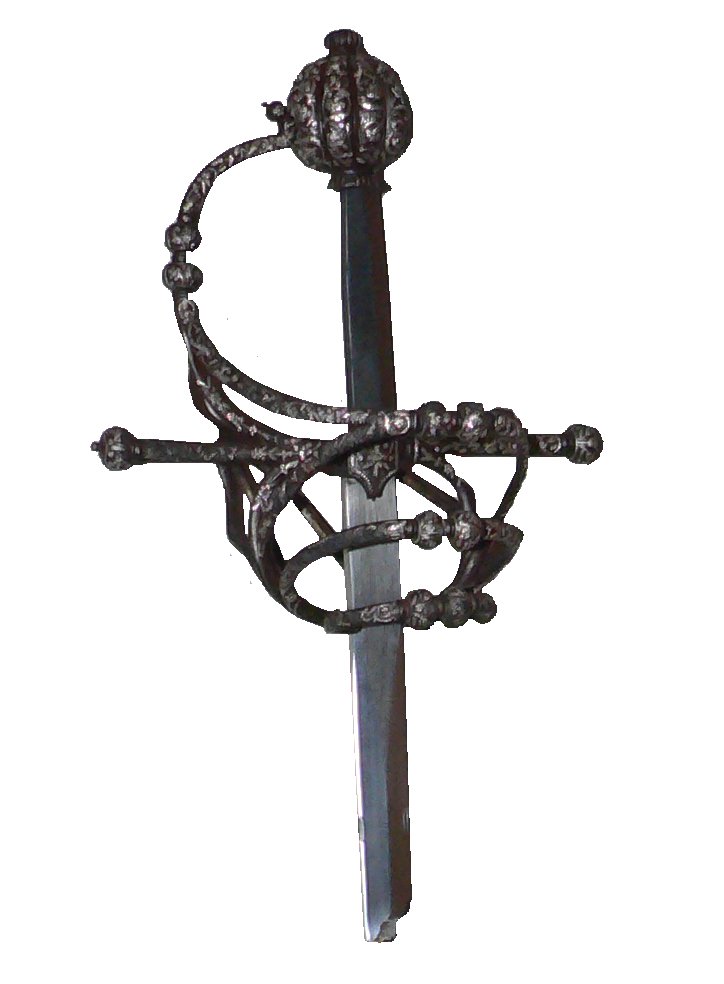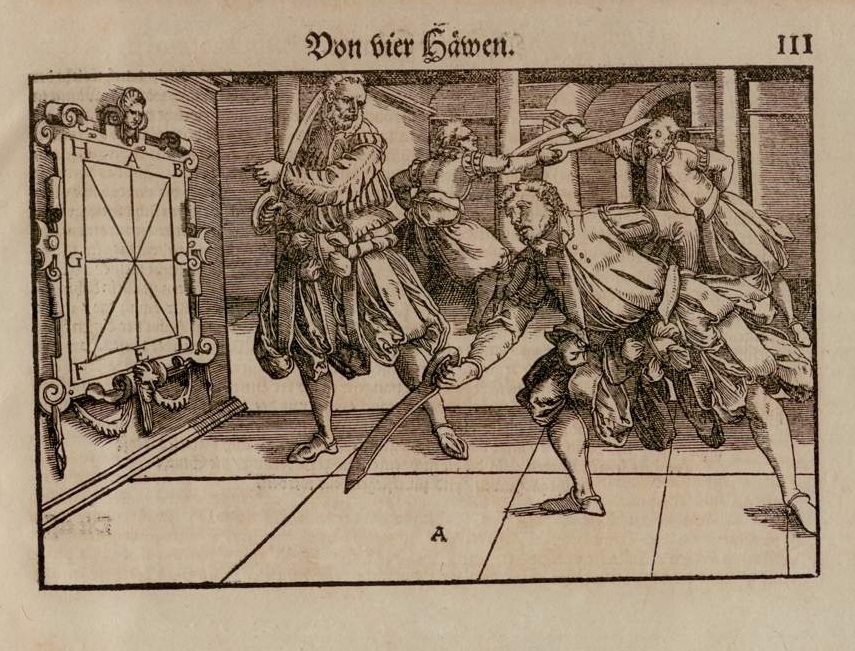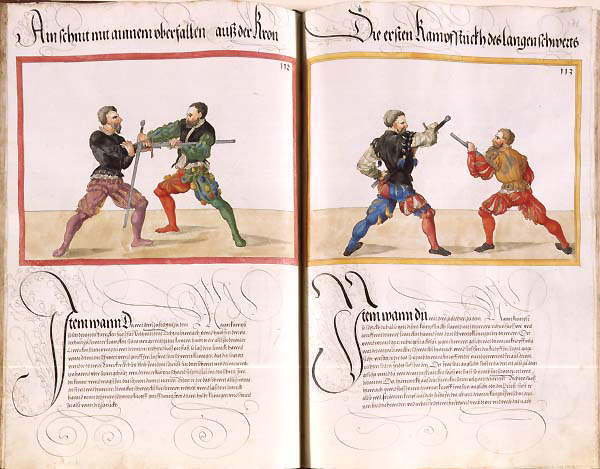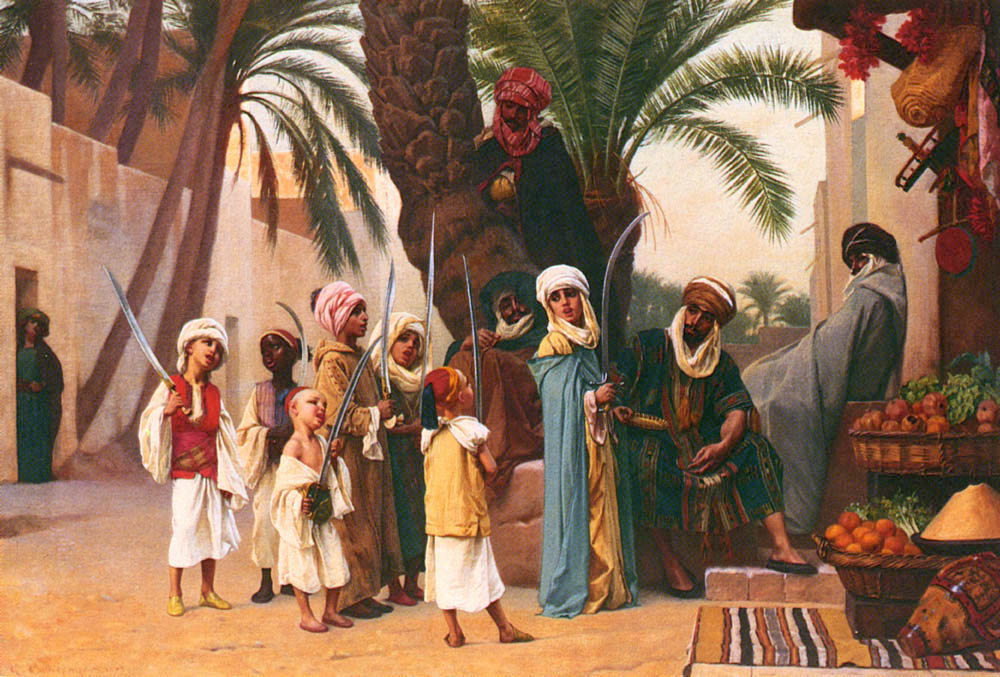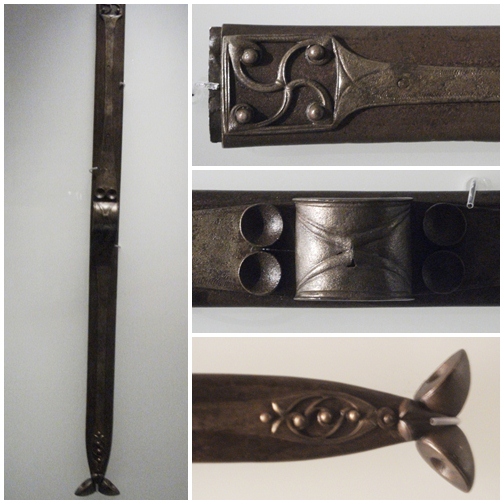|
Acinaces
The acinaces, also transliterated as akinakes ( Greek ) or akinaka (unattested Old Persian ''*akīnakah'', Sogdian ''kynʼk'') is a type of dagger or xiphos (short sword) used mainly in the first millennium BCE in the eastern Mediterranean Basin, especially by the Medes, Scythians, Persians and Caspians, then by the Greeks. The acinaces, of Scythian origin, but made famous by the Persians, rapidly spread throughout the ancient world. The Romans believed that this weapon originated with the Medes. The acinaces is typically in length and double-edged,Blair, Claude and Tarassuk, Leonid, eds. (1982). ''The Complete Encyclopedia of Arms and Weapons''. p.17. Simon & Schuster. . and although there is no universal design, the guard may be lobed with the hilt resembling that of a bollock dagger, or the pommel may be split or of the "antenna" type. The scabbard – as much as anything else – defines the acinaces, and usually has a large decorative mount near the opening, allow ... [...More Info...] [...Related Items...] OR: [Wikipedia] [Google] [Baidu] |
Arzhan Culture
Arzhan is a site of early Saka kurgan burials in the Tuva Republic, Russia, some northwest of Kyzyl. It is on a high plateau traversed by the Uyuk River, a minor tributary of the Yenisei River, in the region of Tuva, 20 km to the southwest of the city of Turan, Tuva Republic, Turan. The Arzhan culture is considered as forming the initial Scythian period (8th–7th century BC), and precedes the Pazyryk culture. The remains of Arzhan are among the earliest of all known Scythian cultures, which has led to suggestions that it is the origin of the Scythian "Animal Style". It is the first stage of the Saka Uyuk culture. Arzhan kurgans The excavations showed burials with rich grave goods including horses and gold artifacts. There are several hundred kurgans. Tunnug 1 (Arzhan 0) 9th century BCE In 2017, the large royal burial mound Tunnug 1 (Arzhan 0), which dates to the same period as Arzhan-1 or slightly earlier (9th century BCE), was investigated by a Russian-Swiss expeditio ... [...More Info...] [...Related Items...] OR: [Wikipedia] [Google] [Baidu] |
Guard (weapon)
The hilt (rarely called a haft or shaft) is the handle of a knife, dagger, sword, or bayonet, consisting of a guard, grip, and pommel. The guard may contain a crossguard or quillons. A tassel or sword knot may be attached to the guard or pommel. Pommel The pommel ( Anglo-Norman "little apple") is an enlarged fitting at the top of the handle. They were originally developed to prevent the sword from slipping from the hand. From around the 11th century in Europe, they became heavy enough to be a counterweight to the blade. This gave the sword a point of balance not too far from the hilt, allowing a more fluid fighting style. Depending on sword design and swordsmanship style, the pommel may also be used to strike the opponent (e.g. using the Mordhau technique). Pommels have appeared in a wide variety of shapes, including oblate spheroids, crescents, disks, wheels, and animal or bird heads. They are often engraved or inlayed with various designs and occasionally gilt and mou ... [...More Info...] [...Related Items...] OR: [Wikipedia] [Google] [Baidu] |
Shamshir
A shamshir () is a type of Persian/Iranian sword with a radical curve. The name is derived from the Persian word ''shamshīr'', which is made of two words ''sham'' ("fang") and ''shir'' ("lion"). The curved " scimitar" sword family includes the shamshir, kilij, talwar, pulwar, and nimcha. A ''shamshir shekargar'' () is the same as a ''shamshir'', except the blade is engraved and decorated, usually with hunting scenes. Description Originally, Persian swords were straight and double edged. Curved sabre blades were Central Asian in origin. There is considerable disagreement between historians as to when these curved blades were first introduced from Central Asia into Persia, and over what period they became adopted and modified into the recognizable Shamshir. Curved blades began to appear in Persia in the 9th century, when these weapons were used by soldiers in the Khorasan region of Central Asia but were not widely adopted. The sword now called a "shamshir" was developed in ... [...More Info...] [...Related Items...] OR: [Wikipedia] [Google] [Baidu] |
Katana
A is a Japanese sword characterized by a curved, single-edged blade with a circular or squared guard and long grip to accommodate two hands. Developed later than the ''tachi'', it was used by samurai in feudal Japan and worn with the edge facing upward. Since the Muromachi period, many old ''tachi'' were cut from the root and shortened, and the blade at the root was crushed and converted into a ''katana''. The specific term for ''katana'' in Japan is and the term ''katana'' (刀) often refers to single-edged swords from around the world. Etymology and loanwords The word ''katana'' first appears in Japanese in the ''Nihon Shoki'' of 720. The term is a compound of ''kata'' ("one side, one-sided") + ''na'' ("blade"),1995, (''w:Daijisen, Daijisen'') (in Japanese), w:Tōkyō, Tōkyō: w:Shogakukan, Shogakukan, , entry available onlinhere/span> in contrast to the double-sided ''Tsurugi (sword), tsurugi''. The ''katana'' belongs to the ''nihontō'' family of swords, and is ... [...More Info...] [...Related Items...] OR: [Wikipedia] [Google] [Baidu] |
Society Of Jesus
The Society of Jesus (; abbreviation: S.J. or SJ), also known as the Jesuit Order or the Jesuits ( ; ), is a religious order of clerics regular of pontifical right for men in the Catholic Church headquartered in Rome. It was founded in 1540 by Ignatius of Loyola and six companions, with the approval of Pope Paul III. The Society of Jesus is the largest religious order in the Catholic Church and has played significant role in education, charity, humanitarian acts and global policies. The Society of Jesus is engaged in evangelization and apostolic ministry in 112 countries. Jesuits work in education, research, and cultural pursuits. They also conduct retreats, minister in hospitals and parishes, sponsor direct social and humanitarian works, and promote ecumenical dialogue. The Society of Jesus is consecrated under the patronage of Madonna della Strada, a title of the Blessed Virgin Mary, and it is led by a superior general. The headquarters of the society, its general ... [...More Info...] [...Related Items...] OR: [Wikipedia] [Google] [Baidu] |
Dussack
A dusack or dussack (also ''dusägge'' and variants, from Czech ''tesák'' "cleaver; hunting sword", lit. "fang") is a single-edged sword of the cutlass or sabre type, in use as a side arm in Germany and the Habsburg monarchy during the 16th to 17th centuries, as well as a practice weapon based on this weapon used in early modern German fencing. Military sidearm The Czech term entered German usage in the Hussite Wars, after the sidearm used by the Hussites. In the late 16th century, ''Dusägge'' could refer to a type of weapon combining a sabre blade with the hilt of a sidesword (the German ''Degen''), also known as ''Säbel auf Teutsch gefasst'' ("sabre fitted in the German manner"). The ''Dusägge'' in this sense was used as a military sidearm; e.g. in 1579, Styria records delivery of some 700 ''Dusäggen'' by local bladesmiths, besides payment of 40 ''Dusäggen'' delivered from Passau, as part of the preparation for the war against the Turks under Archduke Charles II. ... [...More Info...] [...Related Items...] OR: [Wikipedia] [Google] [Baidu] |
Paulus Hector Mair
Paulus Hector Mair (1517–1579) was a German civil servant Historical European Martial Arts, fencing master from Augsburg. He collected Fechtbuch, Fechtbücher and undertook to compile all knowledge of the art of fencing in a compendium surpassing all earlier books. For this, he engaged the painter Jörg Breu the Younger, as well as two experienced fencers, whom he charged with perfecting the techniques before they were painted. The project was very costly, taking a full four years, and according to Mair, consumed most of his family's income and property. Three versions of his compilation, and one later, less extensive manuscript, have been preserved. Not only did Mair spend huge sums on his collections and on his projects, he also had a very expensive lifestyle, frequently hosting receptions for the more important Bourgeoisie#Middle Ages, burghers of Augsburg. His own income was not sufficient for this, and during many years, he misappropriated funds from the city treasury, with t ... [...More Info...] [...Related Items...] OR: [Wikipedia] [Google] [Baidu] |
Binomial Nomenclature
In taxonomy, binomial nomenclature ("two-term naming system"), also called binary nomenclature, is a formal system of naming species of living things by giving each a name composed of two parts, both of which use Latin grammatical forms, although they can be based on words from other languages. Such a name is called a binomial name (often shortened to just "binomial"), a binomen, name, or a scientific name; more informally, it is also called a Latin name. In the International Code of Zoological Nomenclature (ICZN), the system is also called nomenclature, with an "n" before the "al" in "binominal", which is a typographic error, meaning "two-name naming system". The first part of the name – the '' generic name'' – identifies the genus to which the species belongs, whereas the second part – the specific name or specific epithet – distinguishes the species within the genus. For example, modern humans belong to the genus ''Homo'' and within this genus to the species ''Hom ... [...More Info...] [...Related Items...] OR: [Wikipedia] [Google] [Baidu] |
Scimitar
A scimitar ( or ) is a single-edged sword with a convex curved blade of about 75 to 90 cm (30 to 36 inches) associated with Middle Eastern, South Asian, or North African cultures. A European term, ''scimitar'' does not refer to one specific sword type, but an assortment of different Eastern curved swords inspired by types introduced to the Middle East by Central Asian ghilmans (enslaved soldiers). These swords include the Persian '' shamshir'', the Arab '' saif'', the Indian '' talwar'', the North African '' nimcha'', the Turkish '' kilij'', and the Afghan '' pulwar''. All such swords are originally derived from earlier curved swords developed in Turkic Central Asia ( Turkestan). Etymology The English term ''scimitar'' is attested from the mid-16th century and derives partly from the Middle French ''cimeterre'' (15th century) and partly the Italian ''scimitarra''. The ultimate source of these terms is possibly corruptions of the Persian '' shamshir,'' however this is still d ... [...More Info...] [...Related Items...] OR: [Wikipedia] [Google] [Baidu] |
Medieval Latin
Medieval Latin was the form of Literary Latin used in Roman Catholic Church, Roman Catholic Western Europe during the Middle Ages. It was also the administrative language in the former Western Roman Empire, Roman Provinces of Mauretania, Numidia (Roman province), Numidia and Africa (Roman province), Africa Proconsularis under the Vandals, the Exarchate of Africa, Byzantines and the Kingdom of Altava, Romano-Berber Kingdoms, until it declined after the Arab conquest of North Africa, Arab Conquest. Medieval Latin in Southern and Central Visigothic Kingdom, Visigothic Hispania, conquered by the Arabs immediately after North Africa, experienced a similar fate, only recovering its importance after the Reconquista by the Northern Christian Kingdoms. In this region it served as the primary written language, though local languages were also written to varying degrees. Latin functioned as the main medium of scholarly exchange, as the liturgical language of the Roman Catholic Church, Churc ... [...More Info...] [...Related Items...] OR: [Wikipedia] [Google] [Baidu] |
Latin
Latin ( or ) is a classical language belonging to the Italic languages, Italic branch of the Indo-European languages. Latin was originally spoken by the Latins (Italic tribe), Latins in Latium (now known as Lazio), the lower Tiber area around Rome, Italy. Through the expansion of the Roman Republic, it became the dominant language in the Italian Peninsula and subsequently throughout the Roman Empire. It has greatly influenced many languages, Latin influence in English, including English, having contributed List of Latin words with English derivatives, many words to the English lexicon, particularly after the Christianity in Anglo-Saxon England, Christianization of the Anglo-Saxons and the Norman Conquest. Latin Root (linguistics), roots appear frequently in the technical vocabulary used by fields such as theology, List of Latin and Greek words commonly used in systematic names, the sciences, List of medical roots, suffixes and prefixes, medicine, and List of Latin legal terms ... [...More Info...] [...Related Items...] OR: [Wikipedia] [Google] [Baidu] |
Scabbard
A scabbard is a sheath for holding a sword, dagger, knife, or similar edged weapons. Rifles and other long guns may also be stored in scabbards by horse riders for transportation. Military cavalry and cowboys had scabbards for their saddle ring carbines and rifles for transportation and protection. Scabbards have been made of many materials over the millennia, including leather, wood, and metal such as brass or steel. Most commonly, sword scabbards were worn suspended from a sword belt or shoulder belt called a baldric. Antiquity Scabbards have at least been around since the Bronze Age, and are thought to have existed as long as the blade has. Wooden scabbards were typically covered in fabric or leather; the leather versions also usually bore metal or leather fittings for added protection and carrying ease. All-metal scabbards were popular items for a display of wealth among elites in the European Iron Age, and often intricately decorated. Little is known about the scabbards ... [...More Info...] [...Related Items...] OR: [Wikipedia] [Google] [Baidu] |

